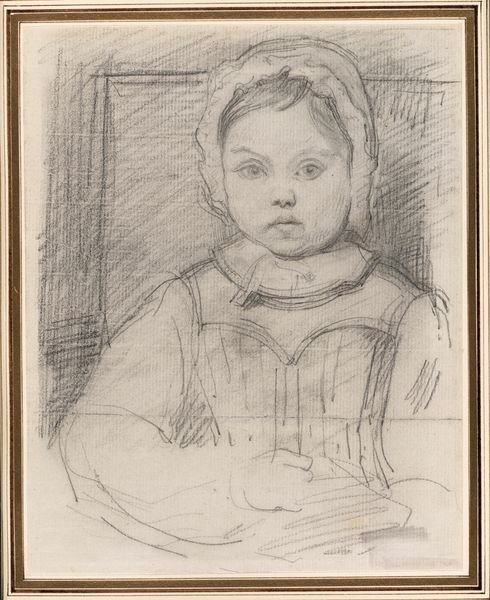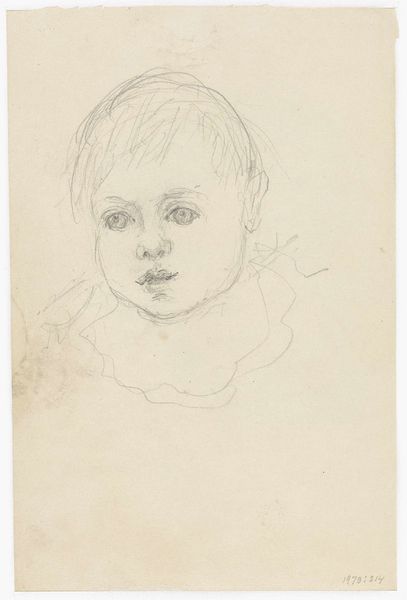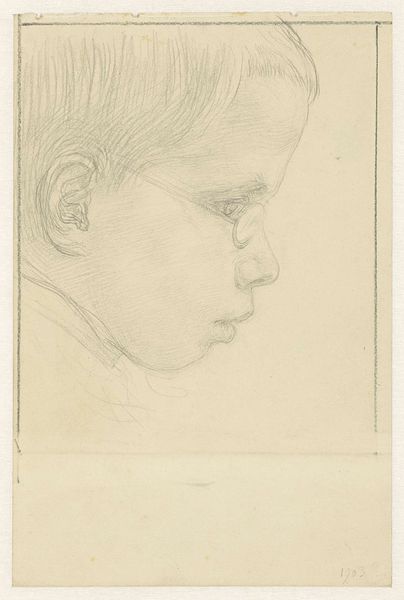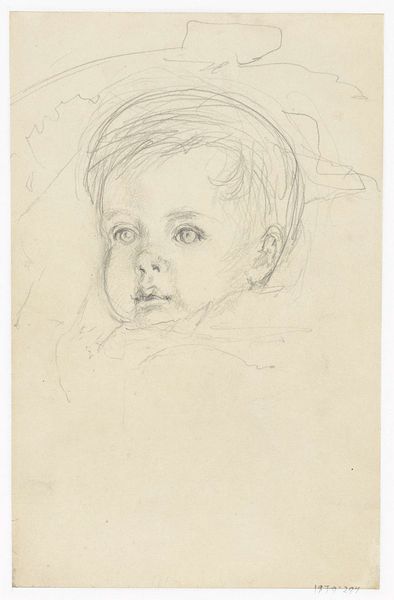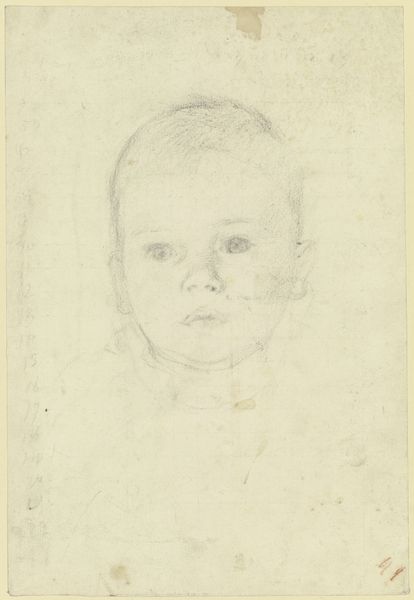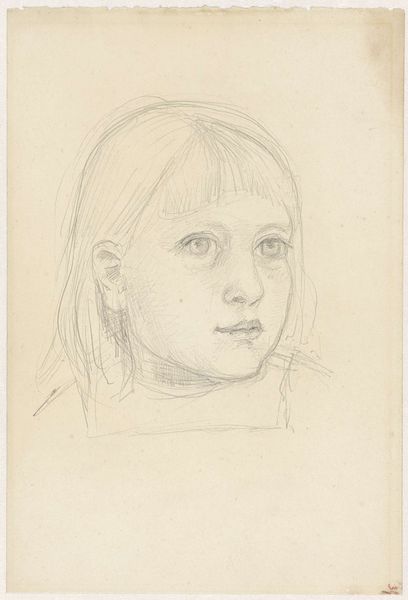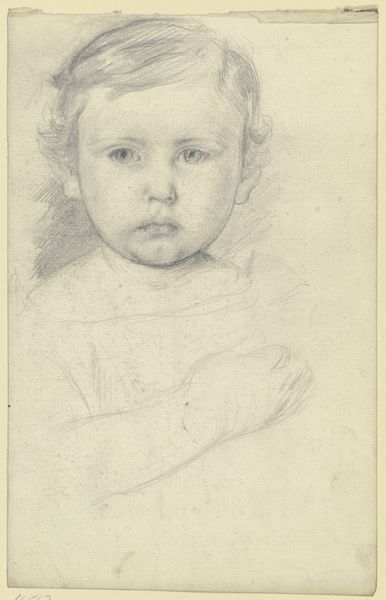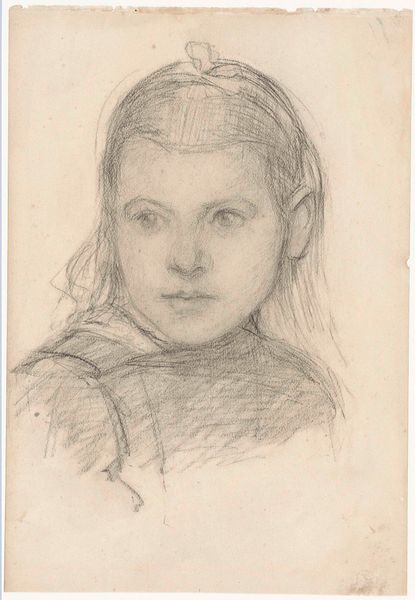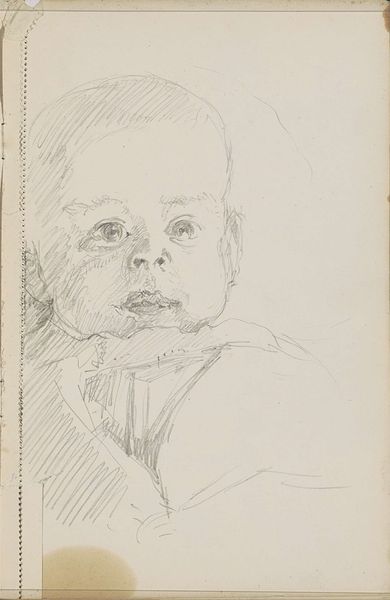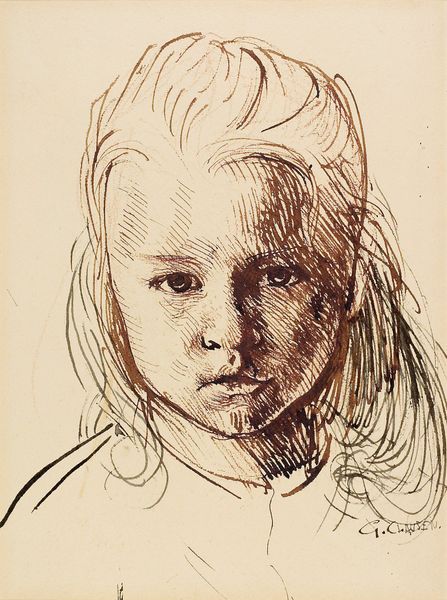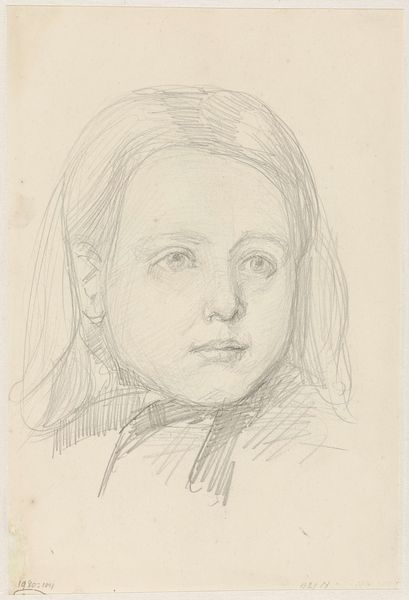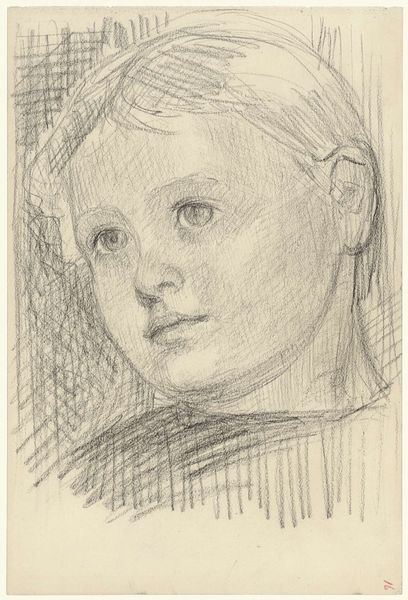
drawing, pencil
#
portrait
#
pencil drawn
#
drawing
#
toned paper
#
light pencil work
#
dutch-golden-age
#
impressionism
#
pencil sketch
#
personal sketchbook
#
pencil drawing
#
pencil
#
sketchbook drawing
#
portrait drawing
#
pencil work
#
sketchbook art
#
realism
Dimensions: height 310 mm, width 208 mm
Copyright: Rijks Museum: Open Domain
Curator: What a compelling image! This is "Kinderkopje," or "Child's Head," a pencil drawing on toned paper by Jozef Israëls, dating from sometime between 1834 and 1911. It currently resides in the Rijksmuseum. What strikes you about it? Editor: Immediately, it's the directness of the gaze that hits me. There's a lack of idealization, almost stark in its realism. I can’t help but wonder, who was this child, and what social strata did they occupy that Israëls chose to depict them so plainly? Curator: Israëls was known for his depictions of working-class individuals and the poor. Considering his social consciousness, the simplicity of the medium – a pencil drawing, easily accessible, inexpensive toned paper– really reinforces the theme of everyday life. It emphasizes process, showing rather than concealing the tools and materials he used. Editor: Exactly. And Israëls’ interest in Realism extends beyond simply depicting their likeness; it seems to grapple with questions of identity and representation in a quickly industrializing Dutch society. The light pencil work adds a layer of complexity. What kind of childhood was this? What did representation mean for a child within the era's burgeoning concept of labor? Curator: I agree; it's tempting to speculate about the socio-economic forces at play that shaped Israëls artistic choices here. The looseness of the sketching, the unfinished quality, speaks to the raw realities that he seems intent on revealing rather than obscuring. This type of sketchbook art makes it raw and in your face as you are standing next to the drawing, rather than a polished painting in a fancy gold frame. Editor: Precisely, a subtle statement on access, class and portraiture's democratization. It also evokes a sense of vulnerability that, within its time, invites critical conversation about art's accessibility, labor, and even childhood as a defined phase. I feel like it connects Dutch Golden age to Impressionism by documenting the child in an accessible means, for all viewers to enjoy. Curator: Absolutely, it's a thought-provoking piece on so many levels. From the materials and their accessibility to the questions it raises about society and representation. Editor: Yes, Jozef Israëls really gave us something significant to chew on with this work. The implications within this drawing seem like they are endless to discover and research!
Comments
No comments
Be the first to comment and join the conversation on the ultimate creative platform.


